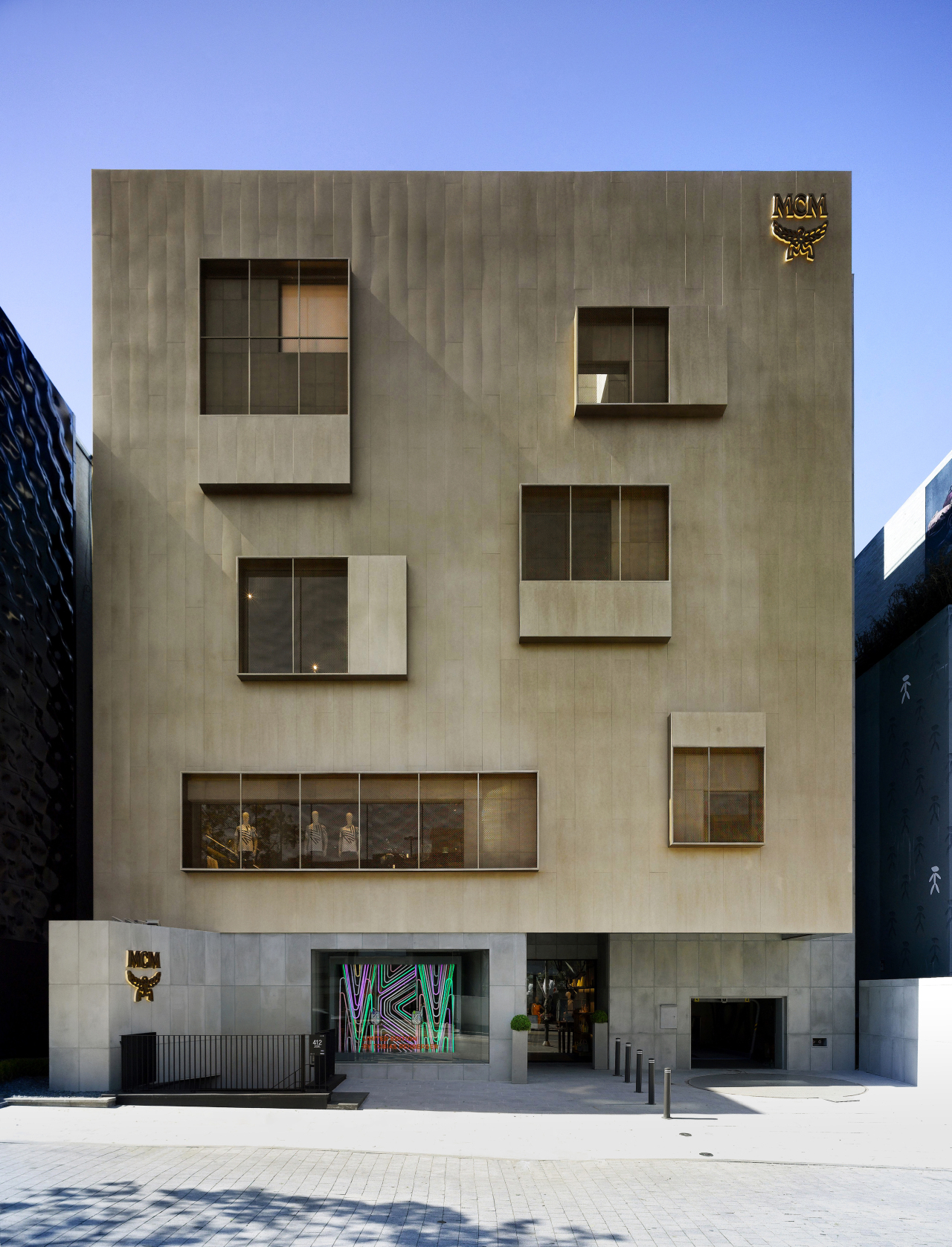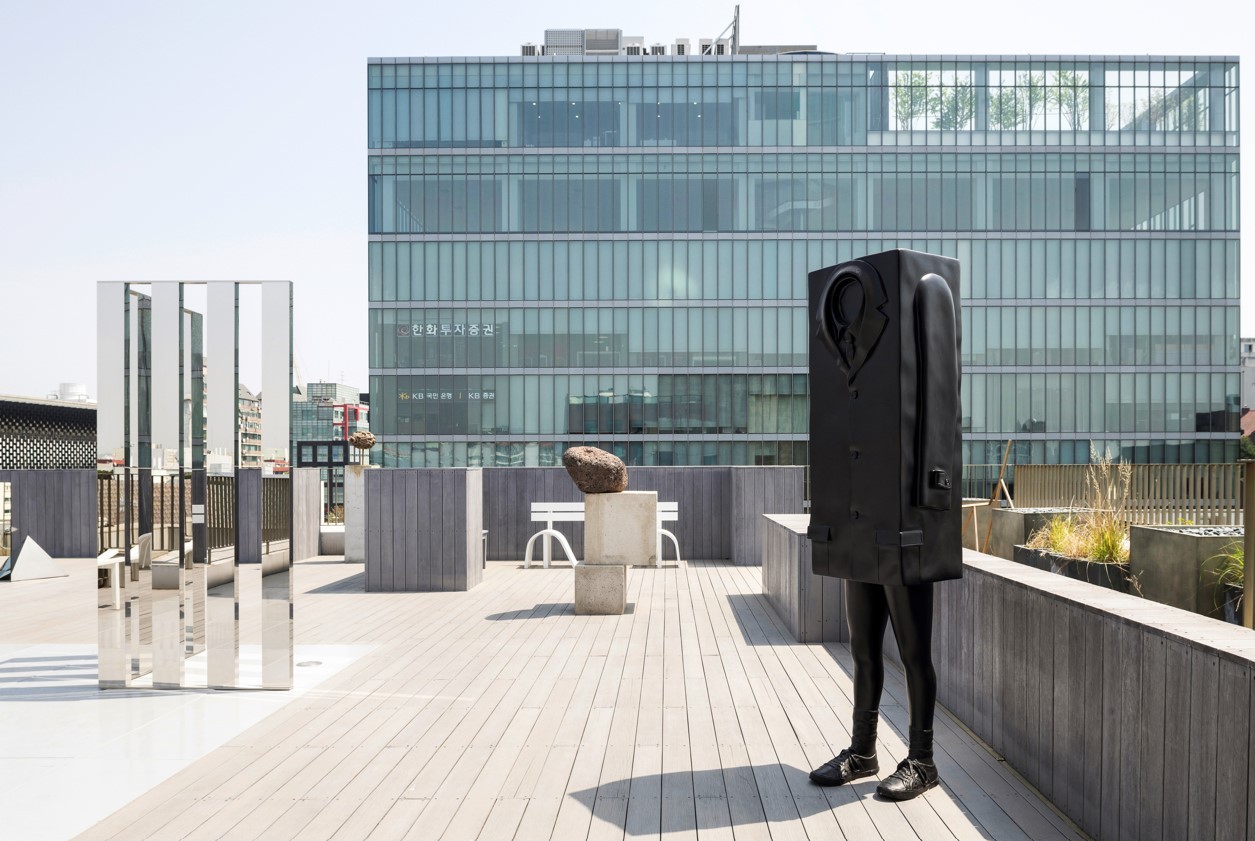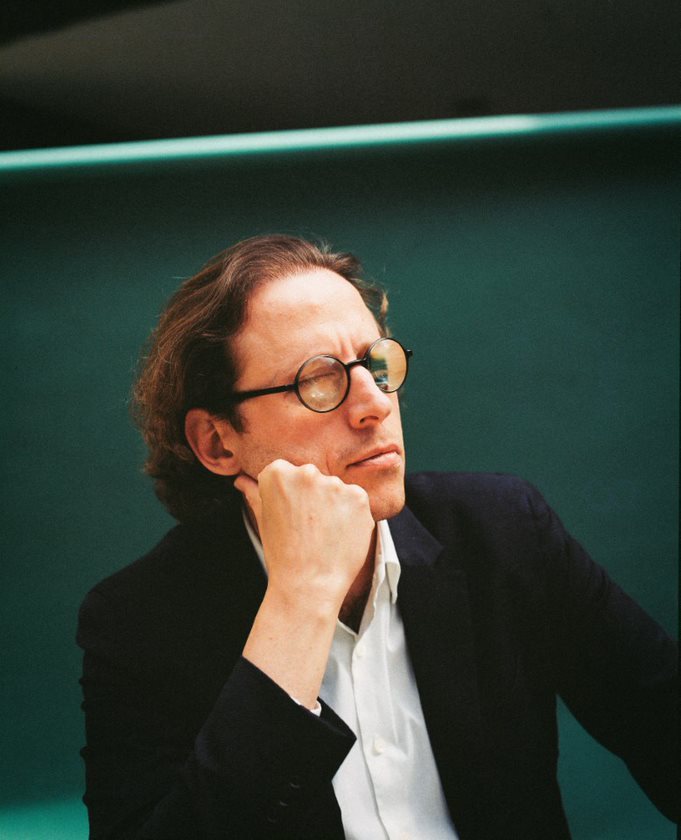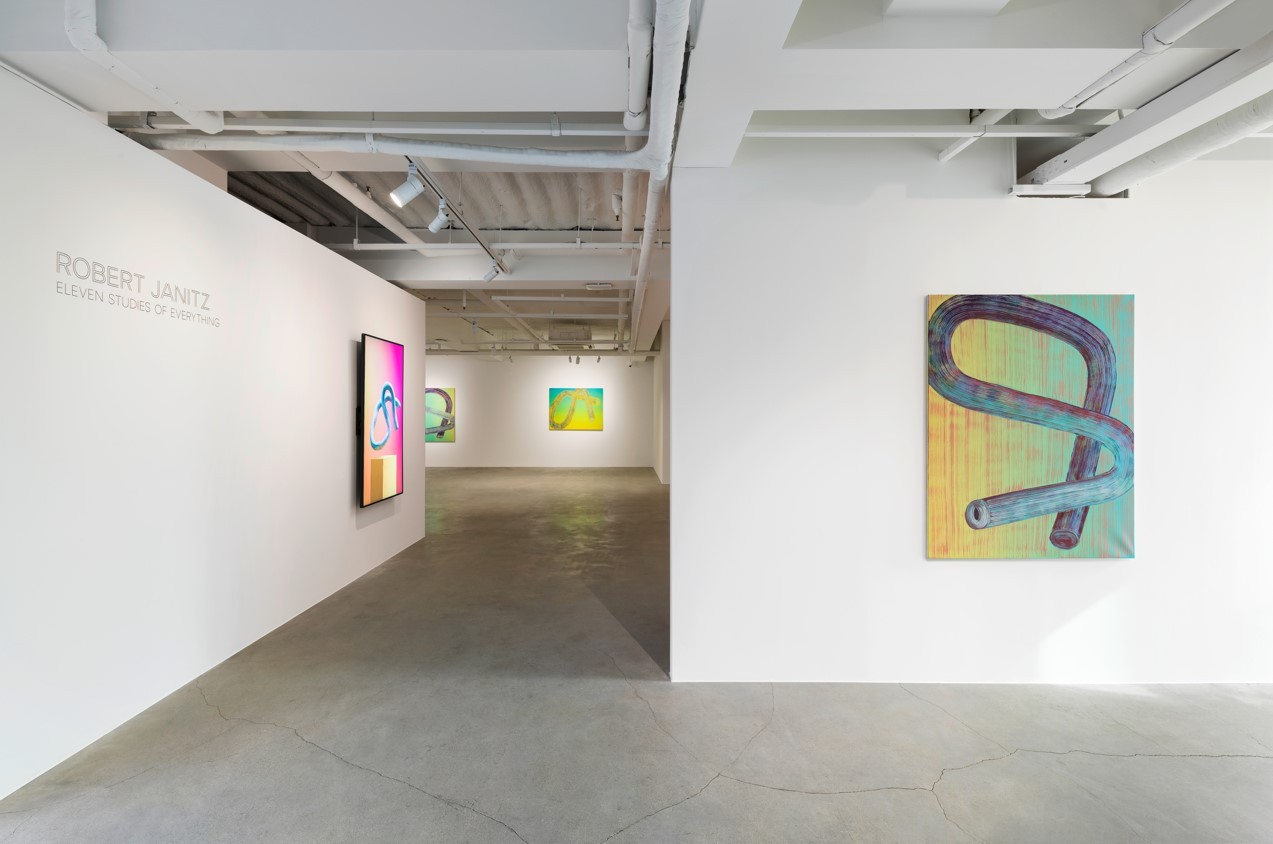 |
The exterior of MCM Haus in Gangnam-gu, southern Seoul where Koenig Seoul occupies the fifth floor and the rooftop terrace. (MCM) |
The following is part of a series that explores international galleries that have opened a location in Seoul, as a new art hub in Asia. --Ed.
A visit to the rooftop garden is a must when you are at Koenig Seoul, a German gallery which opened in Seoul last year.
Sculptures by artists represented by the gallery greet the visitors, offering a place for respite surrounded by art. Koenig Seoul, located at the MCM Haus building in the posh neighborhood of Cheongdam-dong, is the Berlin-based gallery‘s latest branch oversesas.
Johann Koenig, who founded Koenig Gallery in Berlin in 2002, has been innovative in running his gallery, which now has venues in Berlin, London, Monaco, Vienna and Seoul. The 40-year-old founder comes up with creative ideas and does not hesitate trying new things.
 |
Rooftop garden at Koenig Seoul (Koenig Gallery Berlin | London | Seoul | Vienna) |
“I always try to make the best out of it or try to make things differently. For example, when I saw this possibility in Seoul, there was a rooftop which they didn’t use. I thought it was fantastic. I always try to see the potential,” Koenig said during a Zoom interview with The Korea Herald conducted on Feb.3.
After initially opening a gallery in Tokyo in 2019, Koenig turned his eyes to Seoul and moved the gallery’s Asia venue to Seoul in April 2021.
He has seen some advantages of Seoul compared to other Asian cities, including Tokyo, Singapore and Hong Kong, he said. South Korea has been known as a business-friendly country for international galleries thanks to the absence of VAT or import tax on artworks.
To the international gallerist, the advantages were not just confined to the country‘s business-friendly policy on art, but cultural heritage as well, which he described as the “biggest advantage.” Korea’s cultural heritage is what grabbed Koenig‘s attention, including the quality of the country‘s museums such as Seoul Museum of Art and Busan Museum of Art, as well as Korea’s historical art movement “dansaekhwa.”
“The community in Korea was much more welcoming than in Japan. I also had a feeling that social media plays a bigger role in Korea, which is helpful for us,” he said. “I think Korea is really the best of all worlds. We all know about the problems in Hong Kong, China. And probably in the new future, in Singapore,” he said.
He also drew a comparison to Germany.
“I think there is a commonality with Germany also, from its past of being a divided country. Even now, 30 years later, you kind of still feel it (of being divided country). That is something also, which is a certain connection,” he added.
 |
Installation view of works by German artist Katharina Grosse at Koenig Galerie in Berlin (Koenig Gallery Berlin | London | Seoul | Vienna) |
Koenig said he also has found a great potential in Korean collectors, especially among the younger generations. This is unlike European countries, including Germany, who have older and more established collectors. “I think there is a great momentum right now (in Korea). There are a lot of thriving collections which are starting to grow. I think in Korea, we can join in shaping and defining the future of art,” he said.
He believes Frieze Seoul, which is scheduled to kick off on Sept. 2 at COEX in southern Seoul -- becoming Frieze’s first art fair to be held in an Asian city -– is expected to contribute to the Korean art market and make it even more robust.
“Such a fair will accelerate it (the growing Korean art market) and make it larger, opening it up to international audiences, and I think it will also especially drive Korean art internationally,” he added.
The gallery represents some 40 international artists, according to the gallery’s official website. When it comes to Korean artists, he found there are many talented female artists, though male artists here have been receiving attention for a long time. Koenig Gallery has always shown many female artists, he said.
Among the women artists in Korea who have captivated him is Koo Jeong-a, who newly joined the gallery when it opened in Seoul. Koo is widely known at home and abroad as an interdisciplinary artist who explores intersubjective phenomena, presenting the subject through large-scale sculpture and painting, as well as film, animation, sound and scent. The artist is due to hold an exhibition later this year, either in Seoul or Berlin, according to the gallery.
“What I found interesting is that, looking at the younger generation, there are a lot of amazing young female artists. We are also in discussion with Korean young artists,” he said, hinting that the gallery is planning to represent more Korean artists.
“I think art always needs to be innovative and contribute to exciting art. It needs to pick up the conversation of the past and contribute to the future,” the gallerist said on his belief about art and artists.
 |
Johann Koenig (Koenig Gallery Berlin | London | Seoul | Vienna) |
While many galleries tend to be skeptical about the virtual art world, Koenig has been keen on expanding the artistic realm to the virtual space, including NFT art.
During the pandemic, he established an e-commerce venture in June 2020, creating a platform to offer art online including NFT art and fractional ownership. It currently has more than 200 artworks from the primary and secondary markets. “This is the future of collectors,” he said.
“When we look at NFT art, we have to separate it between technology and the artistic use of it. NFT is a technology and can be used for various things -- of course one typical use is digital art. The technology opens a lot of possibilities which have yet to be understood wider,” he added.
Koenig’s autobiography “Blinder Galerist” is set to be released in Korean by the end of this year. Published in German in 2019, it shows how he became one of the world’s most influential art gallerists, overcoming his disability after he lost his vision at the age of 12 in an accident. His vision has been partially recovered.
Koenig Seoul is currently showing a solo exhibition “Eleven Studies of Everything” by Mexico City-based artist Robert Janitz, which runs through March 31. The exhibition includes the artist’s very first NFT “Sweet Sweet Cherry Pink.”
 |
Installation view of the solo exhibition of Mexico City-based artist Robert Janitz at Koenig Seoul (Koenig Gallery Berlin | London | Seoul | Vienna) |









![[Exclusive] Hyundai Mobis eyes closer ties with BYD](http://res.heraldm.com/phpwas/restmb_idxmake.php?idx=644&simg=/content/image/2024/11/25/20241125050044_0.jpg)
![[Herald Review] 'Gangnam B-Side' combines social realism with masterful suspense, performance](http://res.heraldm.com/phpwas/restmb_idxmake.php?idx=644&simg=/content/image/2024/11/25/20241125050072_0.jpg)

